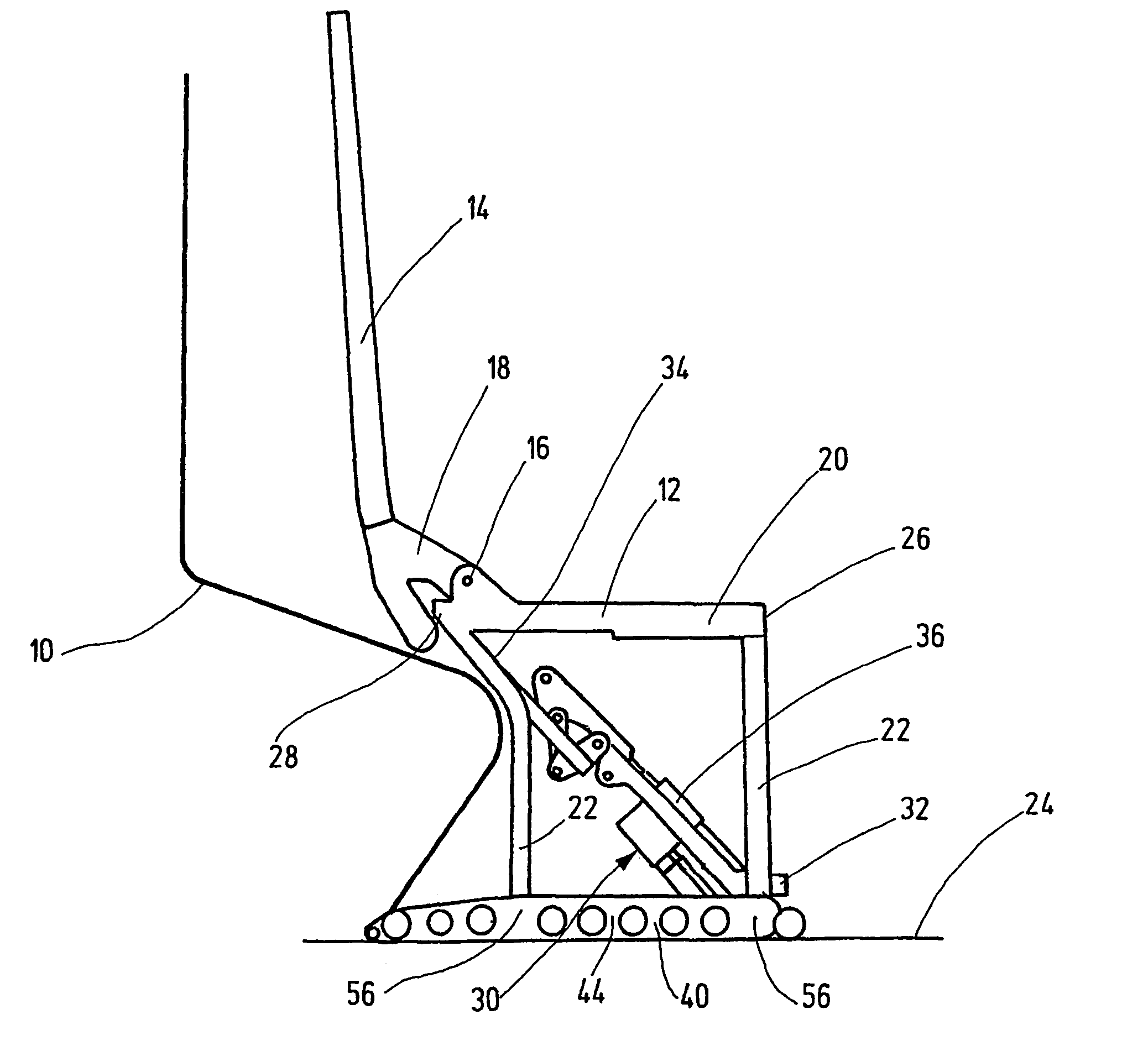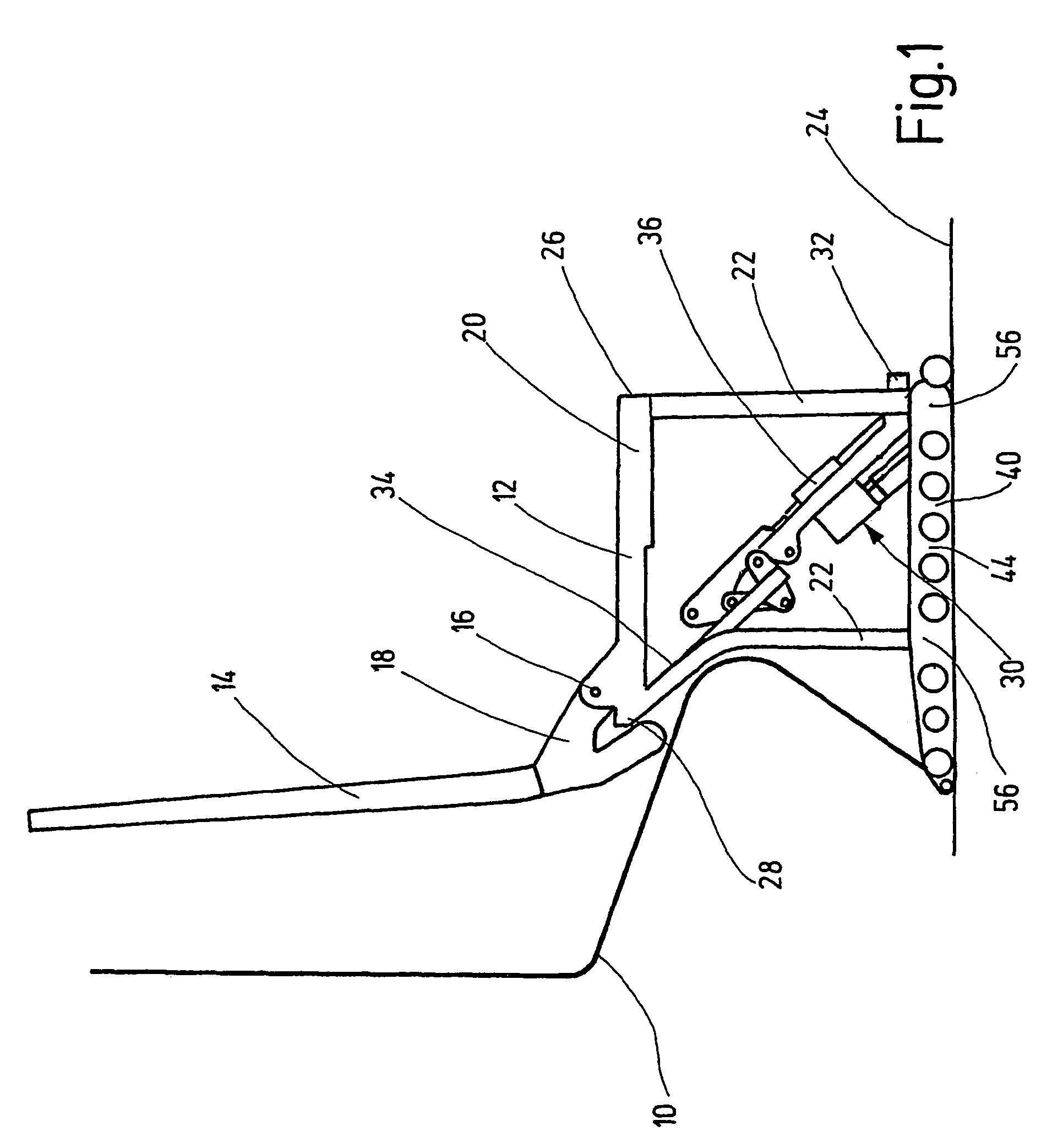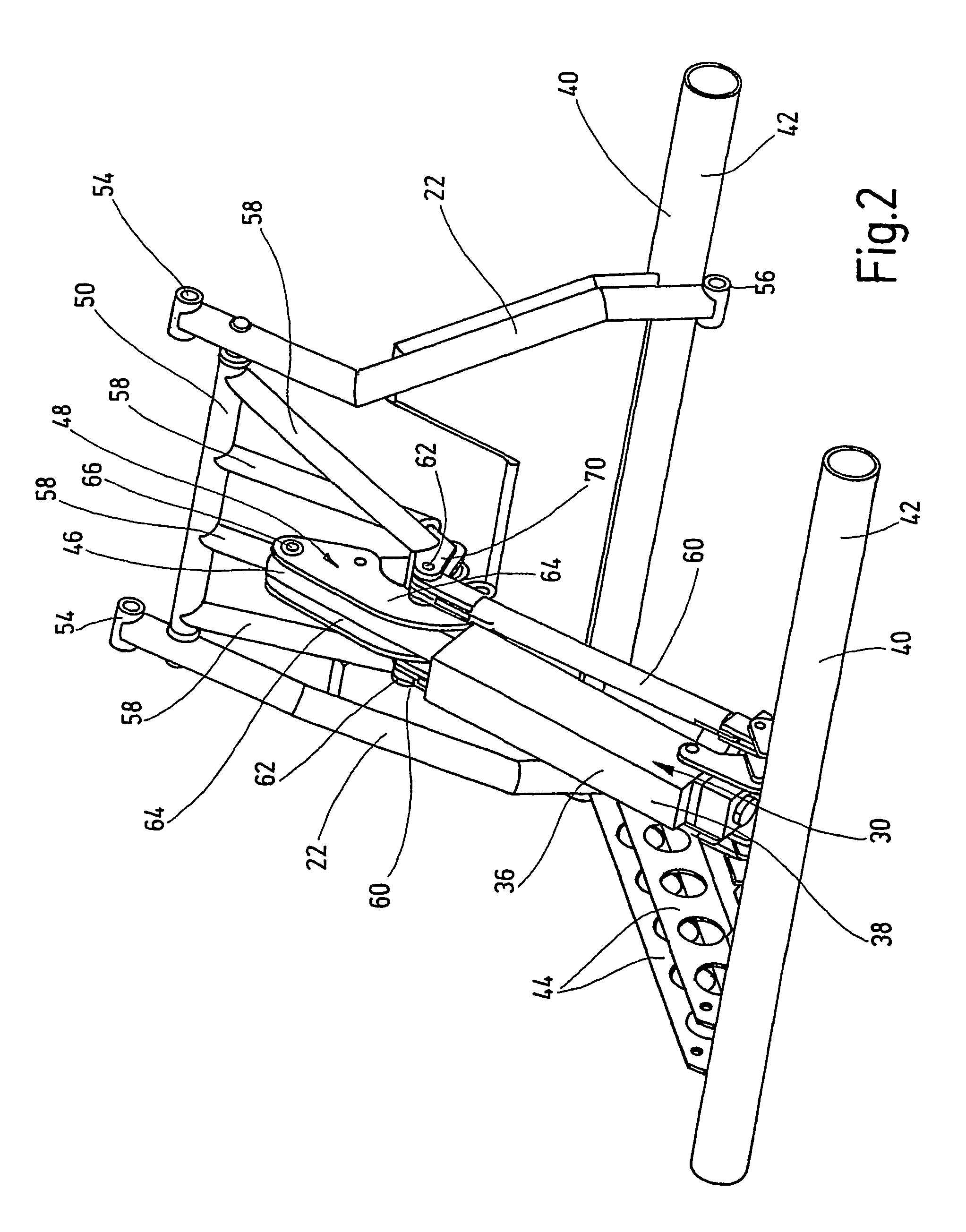Seat, particularly a vehicle seat, preferably in an aeroplane
a vehicle seat and seat technology, applied in the field of seats, can solve the problems of frame structure, adversely affecting the safety of known seat designs, adversely affecting sitting comfort, etc., and achieve the effect of ensuring a high level of safety
- Summary
- Abstract
- Description
- Claims
- Application Information
AI Technical Summary
Benefits of technology
Problems solved by technology
Method used
Image
Examples
Embodiment Construction
[0019]FIG. 1 shows an aircraft passenger seat in the upright position. Such aircraft passenger seats with the corresponding level of outfitting are often found in the first class compartment of long-range aircraft. They could also be used in luxury tour busses or in passenger ships including ferries. Furthermore, the seat can be used as a medical treatment chair for surgery or dentistry. Other applications are in sports medicine and as a chair for the application of cosmetics.
[0020]The illustrated aircraft passenger seat, as shown in FIG. 1, is preferably a component of a compartment which is shown by suggestion in FIG. 1. The aircraft passenger seats could also be used in arrangements next to one another in a row in business class for a conventional multiseat arrangement or the like.
[0021]The aircraft passenger seat comprises individual seat components, such as a seat part 12, a backrest 14 and a leg rest system which is not detailed. For greater clarity, the cushion supports for t...
PUM
 Login to View More
Login to View More Abstract
Description
Claims
Application Information
 Login to View More
Login to View More - R&D
- Intellectual Property
- Life Sciences
- Materials
- Tech Scout
- Unparalleled Data Quality
- Higher Quality Content
- 60% Fewer Hallucinations
Browse by: Latest US Patents, China's latest patents, Technical Efficacy Thesaurus, Application Domain, Technology Topic, Popular Technical Reports.
© 2025 PatSnap. All rights reserved.Legal|Privacy policy|Modern Slavery Act Transparency Statement|Sitemap|About US| Contact US: help@patsnap.com



